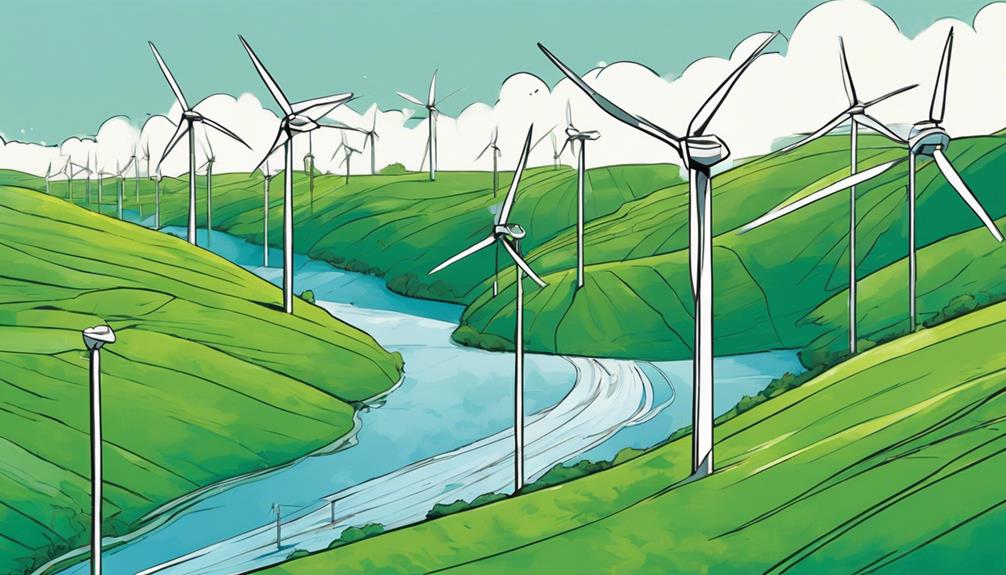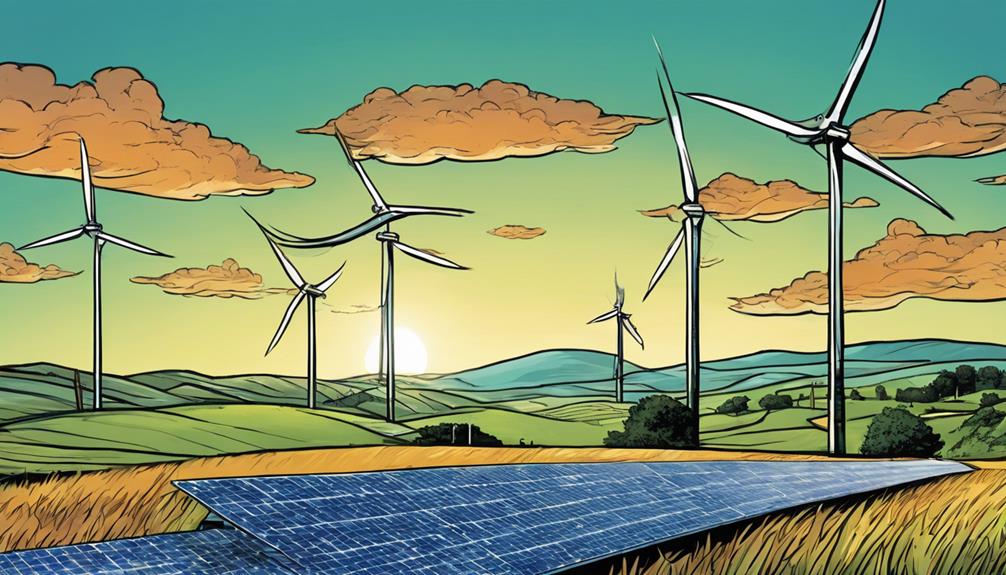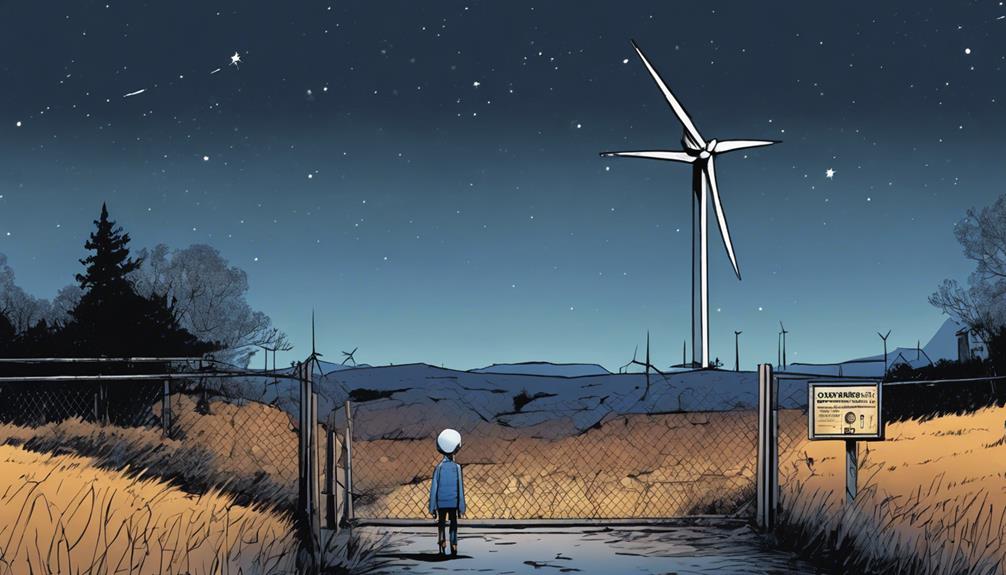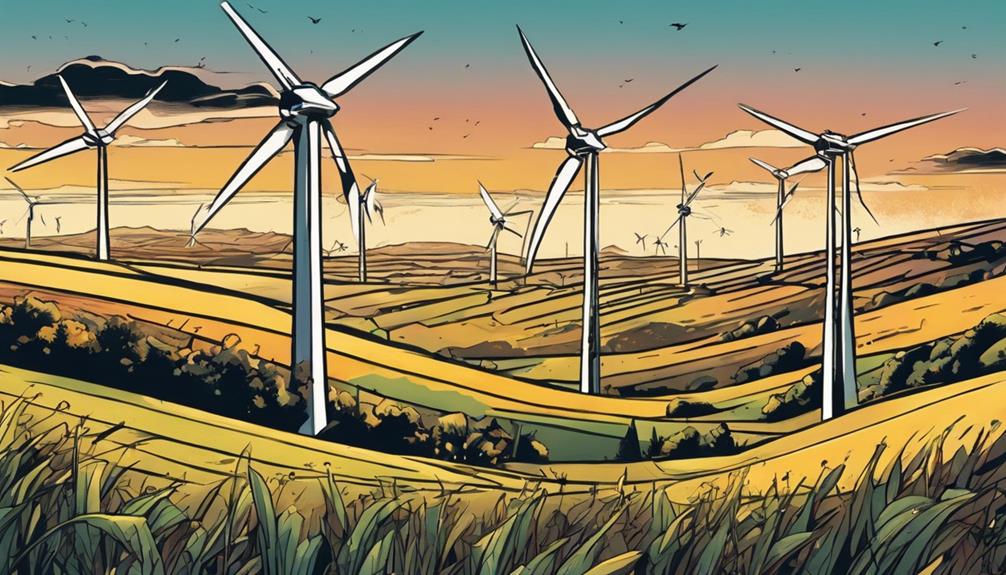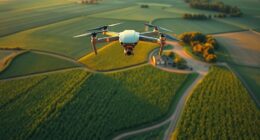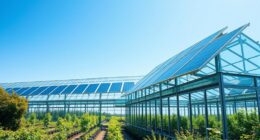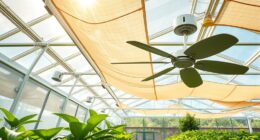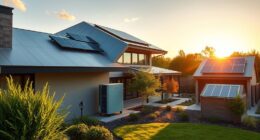I've learned that wind energy conversion relies on a complex process where rotor blades capture kinetic energy from the wind, converting it into mechanical energy, which is then transformed into electrical energy through a generator. To maximize power output, efficient turbine design and operation are essential. Factors like blade configuration, generator efficiency, and proper alignment with wind direction all play a role. I've discovered that different blade configurations offer unique advantages, and generator efficiency can range from 90-99%. By understanding these factors, I can access the full potential of wind energy – and there's more to explore.
Key Takeaways
- Wind energy conversion process involves capturing kinetic energy through rotor blades, converting it to mechanical energy, and then to electrical energy.
- Generator efficiency, ranging from 90-99%, significantly impacts wind turbine power output, with Permanent Magnet generators being the most efficient.
- Proper alignment of the generator with wind direction and adjusting blade pitch and yaw maximize wind energy capture and efficiency.
- Regular maintenance prevents wear and tear on blades and generator, ensuring optimal wind turbine operation and efficiency.
- Understanding differences in blade configurations, such as two-blade, three-blade, and multi-blade turbines, is crucial for optimizing wind turbine design and efficiency.
Wind Energy Driving Turbine Generators
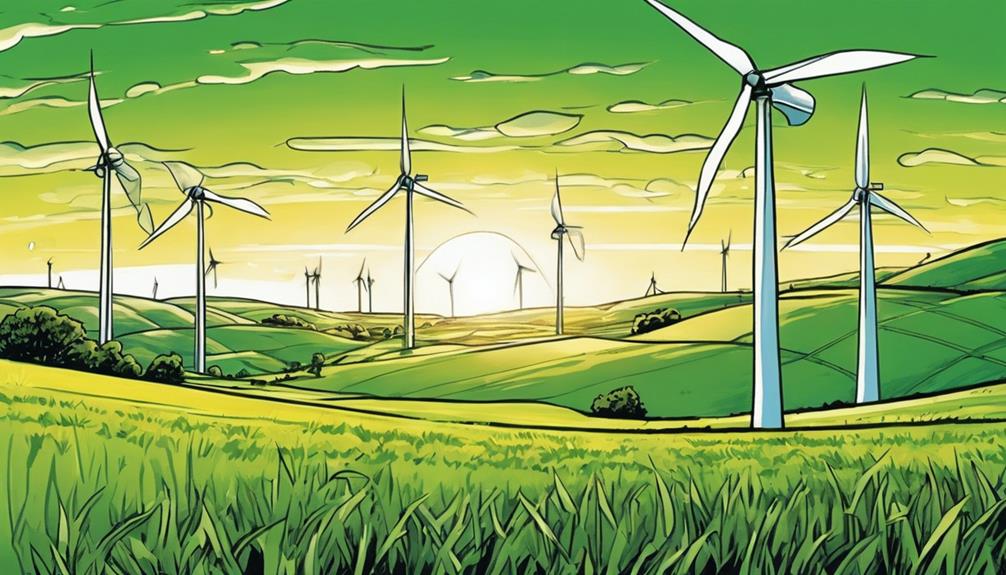
As I explore the world of wind energy, I realize that the kinetic energy of the wind is the primary force driving wind turbine generators, converting mechanical energy into electrical power through a remarkable process.
The wind's kinetic energy rotates the turbine blades, which in turn spins the generator's shaft, producing electrical power.
Advancements in wind turbine design have led to larger, more aerodynamic blades that capture wind energy more efficiently. This efficient energy conversion is essential for harnessing wind power.
Wind Turbine Design Advancements
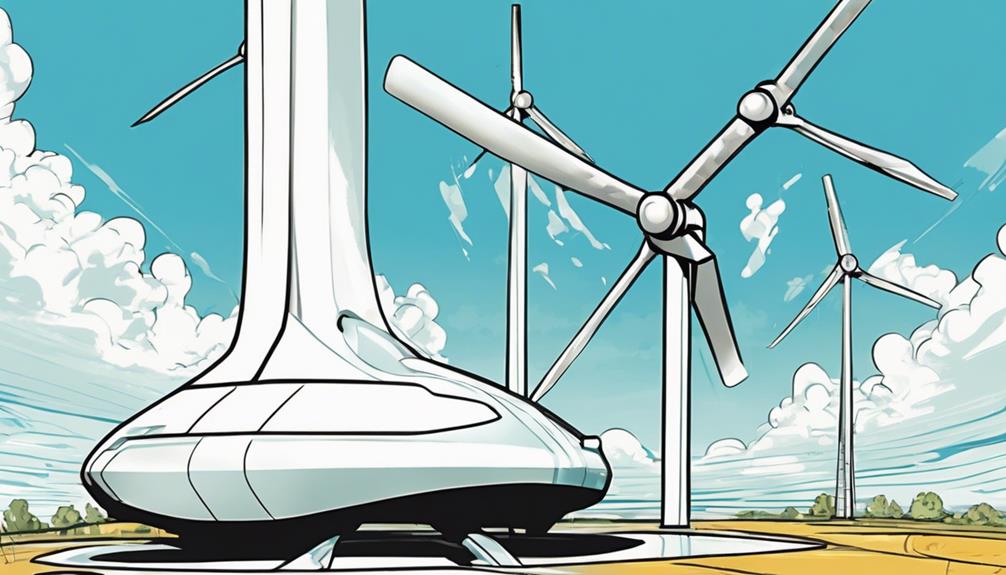
Advances in wind turbine design have led to the development of larger, more aerodynamic blades that capture wind energy more efficiently. These design improvements have greatly enhanced the conversion of wind energy into electrical energy.
I've seen how larger blades can rotate at slower speeds, reducing noise and boosting efficiency. The aerodynamic shape of the blades also allows them to capture more wind energy, even at lower speeds.
Additionally, advances in materials have made blades stronger and lighter, reducing fatigue and extending their lifespan. These design advances have played a pivotal role in increasing the efficiency of wind turbine generators, making them a more viable source of renewable energy.
Wind Energy Conversion Process
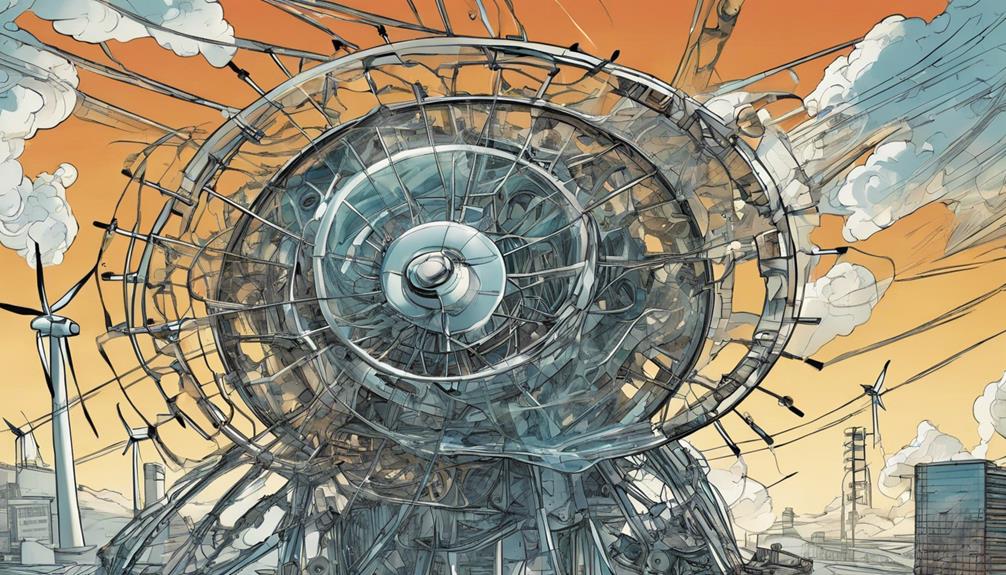
I'll explore how wind energy is converted into electrical energy through the wind turbine's rotation, where the kinetic energy of the wind is harnessed and transformed into mechanical energy. The process begins with the rotor blades capturing the wind's kinetic energy, converting it into rotational motion. This motion powers the generator, typically an induction or synchronous type, housed in the nacelle. The generator then converts the mechanical energy into electrical energy.
| Component | Function | Output |
|---|---|---|
| Rotor Blades | Capture wind's kinetic energy | Rotational Motion |
| Rotor | Converts kinetic energy to mechanical energy | Mechanical Energy |
| Generator | Converts mechanical energy to electrical energy | Electrical Energy |
| Nacelle | Houses the generator | – |
| Tower | Supports the turbine | – |
Factors Affecting Turbine Performance
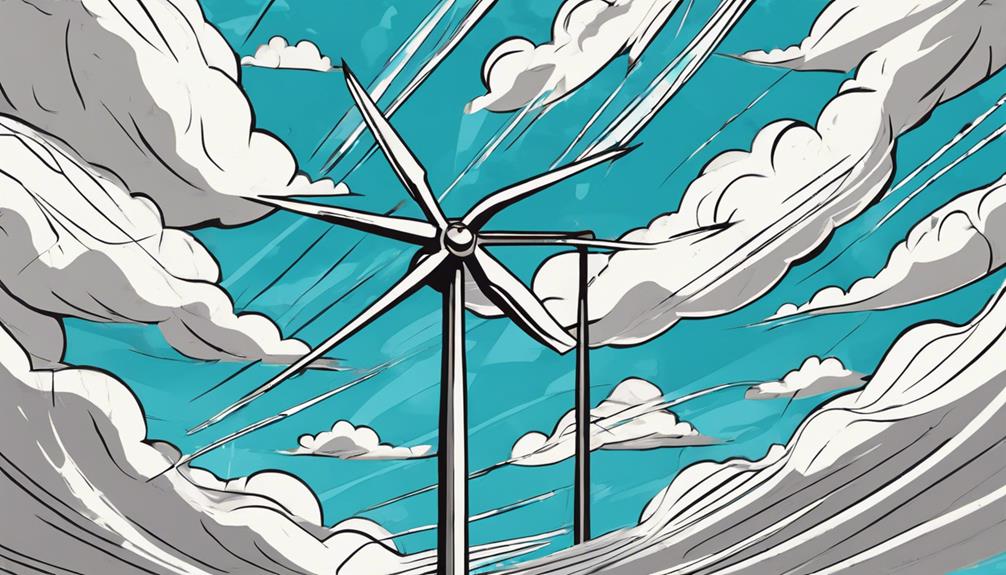
The number of blades, a crucial element in wind turbine design, greatly impacts turbine performance and energy production.
I've found that two-blade turbines are cost-effective for low wind speeds, but they're less efficient in high winds.
Three-blade turbines, on the flip side, are popular due to their greater efficiency, but they come with higher manufacturing costs.
Multi-blade turbines offer increased capacity and better resistance against strong winds, but they're not without their drawbacks.
Budget constraints, material costs, drag forces, and wind conditions all influence blade configuration choices.
As I investigate further, I realize that each blade configuration has its advantages regarding energy production, stability, and cost-effectiveness.
Efficiency of Blade Configurations
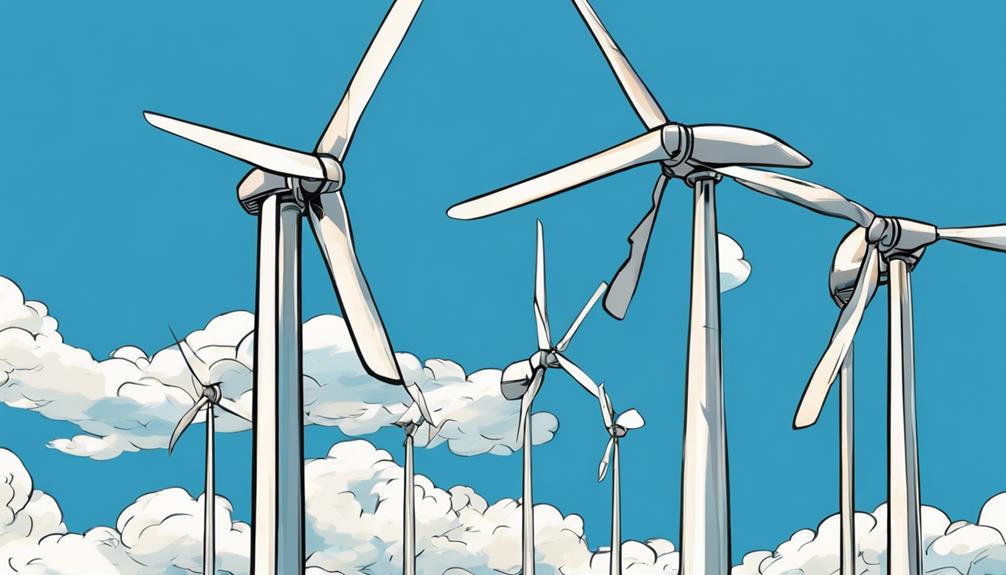
As I examine the various blade configurations, it becomes evident that each design has its unique strengths and weaknesses when it comes to efficiency.
Two-blade turbines are cost-effective and efficient, especially in low wind speeds.
Three-blade turbines are popular due to greater efficiency and noise reduction.
Four-blade turbines offer stability, cost efficiency, and increased energy production.
Five-blade turbines provide increased torque at lower speeds and better resistance against strong winds.
Each blade configuration has its advantages regarding energy production, stability, and cost-effectiveness. Understanding these differences is essential for optimizing wind turbine design and operation.
Generator Efficiency and Power
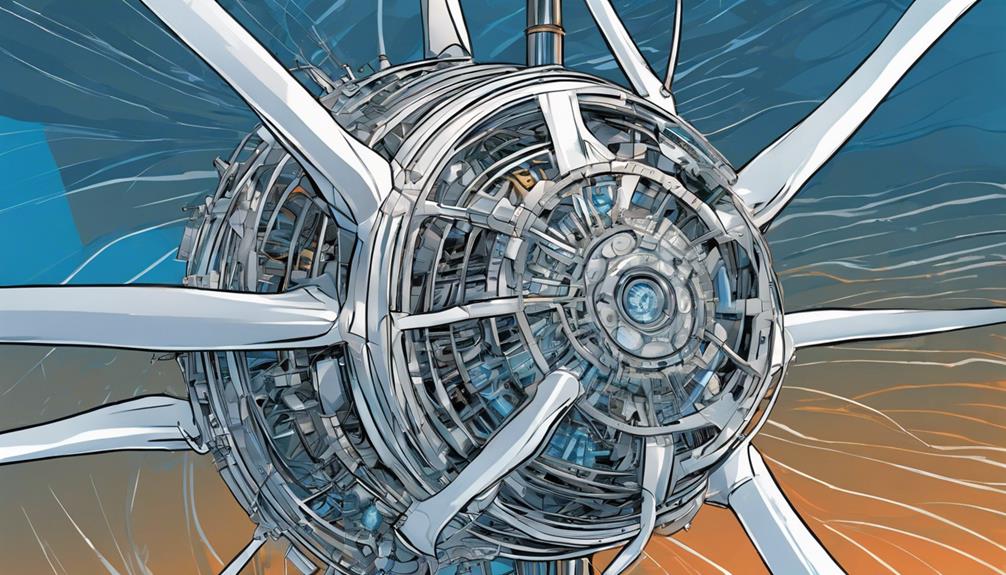
Beyond blade configurations, generator efficiency plays a critical role in determining the overall power output of a wind turbine, with even slight improvements capable of greatly boosting electricity production. As I explore the realm of wind energy, I've come to realize that generator efficiency is the unsung hero of wind turbine performance. A highly efficient generator can make all the difference in harnessing the full potential of wind energy.
| Generator Type | Efficiency Range | Optimal Wind Direction |
|---|---|---|
| Induction | 90-95% | Westerly winds |
| Synchronous | 95-98% | Northerly winds |
| Permanent Magnet | 98-99% | Southerly winds |
Optimal Wind Turbine Operation
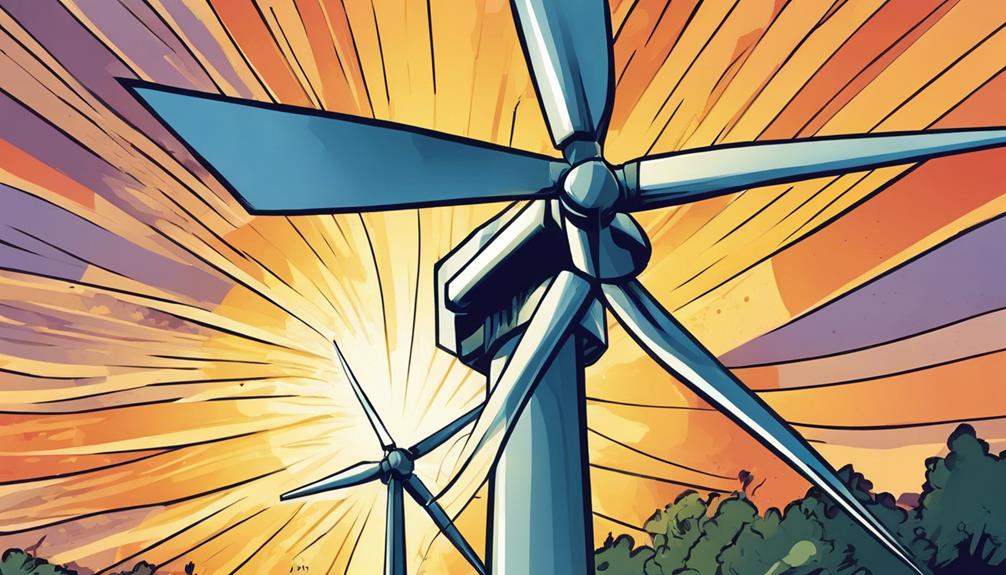
How do I guarantee my wind turbine operates at its peak, given the intricate dance between generator efficiency, wind direction, and blade configuration?
I start by ensuring the generator is properly aligned with the prevailing wind direction. This fine-tuning is crucial, as even a slight misalignment can significantly reduce power output.
Next, I monitor wind speed and direction to adjust the blade pitch and yaw accordingly. This adjustment enables the turbine to capture the maximum amount of wind energy.
Regular maintenance is also essential to prevent wear and tear on the blades and generator.
Frequently Asked Questions
Can Wind Turbines Operate Efficiently in Extreme Weather Conditions?
"I've wondered if wind turbines can operate efficiently in extreme weather conditions. The answer is yes, with advancements in design, they can withstand strong winds and even generate more power in turbulent conditions."
How Do Wind Turbines Mitigate Noise Pollution in Residential Areas?
"I'm concerned about noise pollution in residential areas; wind turbines mitigate this by using slower rotor speeds, optimized blade designs, and strategically placing turbines to minimize sound disturbance for nearby residents."
Are Wind Turbines Compatible With Existing Power Grid Infrastructure?
"As I gaze upon the ancient windmills of yore, I ponder modern compatibility. Yes, wind turbines can seamlessly integrate with existing power grid infrastructure, ensuring a smooth supply of clean energy to the masses."
What Is the Average Lifespan of a Wind Turbine Generator?
"I'm often asked about the average lifespan of a wind turbine generator, and I can confidently say it typically ranges from 20 to 25 years, depending on factors like maintenance, wind conditions, and quality of components."
Can Wind Turbines Be Used for Both On-Grid and Off-Grid Power Generation?
"Like a conductor leading an orchestra, I'll harmonize the answer: Yes, wind turbines can be used for both on-grid and off-grid power generation, providing flexibility in meeting diverse energy demands, whether connected to the grid or standing alone."
Conclusion
As I conclude my journey into the world of wind energy, I'm left in awe of the intricate dance between turbine blades and generators. Like a maestro conducting a symphony, the wind orchestrates the conversion of kinetic energy into electrical power.
With a deeper understanding of the conversion process, blade configurations, and generator efficiency, I'm convinced that wind energy will continue to play an essential role in powering our world – efficiently and sustainably.
